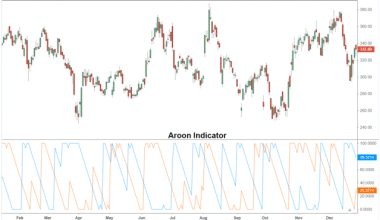With new items entering the market daily, there is an ever-increasing demand for better product development. The industry, type of product, features, and other factors all play a role. That is why you want a strong product development strategy. Many businesses focus on a product depending on their clients. Some people decide to use their product to solve an existing problem. However, until they have a comprehensive product development strategy in place, there is a good probability they will fail sometime along the way. This post will explain what a product development strategy is and provide examples. Let’s get this party started.
What is a Product Development Strategy?
A product development strategy is a process of introducing a new product into an existing or new market by doing ongoing market research, extensive testing, and rigorous product ideal preparation.
It could also refer to introducing a current product into a new market. You may also require a product development strategy for any present product in the market. This is more often when releasing a new feature, rebranding, or launching a new complementary product line.
According to the product life cycle, every product eventually reaches a plateau as business revenue growth slows. This is typically when a company implements new product-led growth methods, new product lines, or a new marketing strategy.
Some businesses concentrate on new product development techniques that allow them to generate new items that assist existing products to expand. It makes no difference whether you have a successful product or not; a product development strategy can help you expand.
A product development strategy is typically used in tandem with a business strategy. The product development process might vary depending on whether it is for commercialization, more iterations of an existing product, or anything else.
Product functionality is usually the outcome of considerable market research via focus groups. This assists the consumer in understanding the needs of specific demographics and target markets. The development team can then use that data to discuss and devise an appropriate strategy.
Why Is Product Development Strategy Important?
A product development strategy is crucial because it employs market research to create a plan for success in selling items. The strategies and procedures you will employ during each step of product development should be part of your overall strategy. This can assist you in overcoming hurdles and focusing on the most effective tactics. Making plans on how to develop other products can also help you adjust existing products and expand your firm.
What Are the Stages of Product Development?
Product development encompasses all areas of creating innovation, from conceptualization to product to customers. When altering an existing product to generate fresh interest, these stages validate the adjustments’ probable success in generating commerce. The following are the seven stages of product development:
- Idea development: Idea development entails brainstorming for new items as well as ways to make existing ones more relevant.
- Editing and selection: The product development team assesses which ideas have the best market potential throughout the selection process.
- Prototype creation: Once an idea has been chosen, the corporation needs to develop a prototype or draft version of its proposed product. This prototype can be used to test whether the product works as anticipated and appeals to your target audience.
- Analysis: During the product development analysis stage, the organization does market research and analyses potential product challenges.
- Product creation: After adding analysis notes to the prototype, the finished product can be developed.
- Market testing: Before distributing a product to a larger public, it is sometimes released to a smaller market or focus group. The market testing phase comprises assessing customer input and the marketing efficacy of the product.
- Commercialization: The last stage of product development occurs after market testing is completed and the product is released to the general public.
Benefits of Product Development Strategy
A solid product development strategy can help your company transform a concept into a successful product and then tweak it to stay competitive in the market. Your product development strategy can highlight areas for improvement as well as the most effective ways. To get the most out of your product development strategy, think about how different strategies would work for each step and make adjustments depending on your previous experiences.
Examples of Product Development Strategy
Here are five product development strategy examples:
- Develop new product/service lines outside of your primary product.
- Determine your role: innovator, follower, or low-cost participant.
- Create a product portfolio that is commensurate with your risk tolerance and market position.
- Connect your business goal to product strategy, then to annual budgets.
- Implement appropriate governance, finance, and processes for developing new product strategies.
Examples of Product Development Strategy Applications
It is frequently as simple as taking an existing product, slightly altering it, and selling it in your existing market. This increases value for customers, who may purchase your new product even if they already own the existing version. The following are some key examples of product development strategy:
Product development strategy examples based on technology
Amazon product development strategy
Amazon is an example of a customer-focused product development strategy. Their product strategy is solely focused on consumer needs. Amazon-like to start with the target market and move backward. They start by writing the product’s press release and refining it until the language is clear enough for anyone to grasp. There is no technical jargon concerning technologies or user interfaces in the press release. They then work their way back from the press release to the product. This is a product development strategy that focuses on Amazon’s internal process of collaborating with consumers to build a specific product that addresses a specific need.
Apple’s
A platform/derivative strategy is exemplified by Apple. They link their overarching strategy to their product development process. The IT behemoth is often product-driven. Apple develops things and then finds a market for them. Customers, according to Steve Jobs, do not always know what they want. Apple believes that customers will pay a premium for excellent items and focuses on improving existing offerings. Apple relies on brand loyalty and is content to let competitors dominate the market for lower-priced devices that compete with Apple’s.
Google’s new product development strategies are often technological. Google believes in the power of technology to “address a huge problem in a big way.” This is a market-oriented strategy since Google prefers to grow the market for everyone, which benefits Google as the market leader. Google similarly prioritizes expansion over income. Google’s product development strategy is long-term; it is typical of a corporation that has consistently been a market leader.
Microsoft
Microsoft is an example of a partnership-based product innovation strategy. “Our industry respects innovation more than tradition,” stated Microsoft CEO Satya Nadella. In 2014, the mature IT behemoth began its strategic change. It lost the smartphone business to competitors while investing in AI and cloud computing. It established an AI division comprised of thousands of engineers and scientists. Also, it abandoned its confrontational tactics and began to promote collaboration. It embraced open-source software, eventually becoming the leading contributor of open-source code by 2017. Microsoft is now the only product that offers a distinct product, as opposed to Google, Twitter, and Facebook, which all sell user data.
Product development strategy examples based on consumption
Coca-cola
Coca-Cola’s strategy revolves entirely around the customer’s voice. “Our brands will survive and our system will expand if we accept where the consumer is heading.” In 2017, Coke President and COO James Quincey stated, “This is our path ahead.” Coca-Cola has become fully focused on the consumer and what they want from beverages. Coke is adapting to changing consumer demands, such as a shift toward lower-sugar choices. Coke has introduced new products in response to consumer demand in recent years, ranging from juices to coconut water to organic tea. Consumers seek beneficial beverages. Some advocate for smaller, more portable containers than the traditional Coke can.
IKEA
IKEA’s strategy is to focus on cheap costs while maintaining a constant level of quality. A large number of interchangeable parts necessitates a global supply network. To ensure quality, the organization initially rented equipment to vendors and provided training. Later, as it grew into a global brand, it reorganized its supply chain to accommodate the high volume and geographic dispersion of its suppliers. Ikea can follow a product differentiation strategy by supplying furnishings for any home thanks to its core strength in supply chain management. Ikea is likewise dedicated to sustainable design concepts. Its product strategy is based on clever design, which is supported by an unrivaled supply chain.
Kellogg’s
Kellogg’s strategy includes both divesting and purchasing. Furthermore, Kellogg’s may have to offload some of its most beloved cereal brands to transition into a future that better serves consumers. Growing up, the Boomers’ favorite breakfast cereals were Kellogg’s renowned brands like Corn Flakes, Frosted Flakes, and Froot Loops. However, times have changed, and the cereal business is falling as more customers eschew sugar and carbohydrates. Following an acquisition and divestment strategy, Kellogg sold its Keebler and Famous Amos cookie brands while acquiring more health-conscious products such as RXBAR.
What Are the Goals of the Product Development Plan?
From a corporate perspective, the goal of product creation is to cultivate, maintain, and grow a company’s market share by meeting consumer demand. To guarantee value in the product as a high-quality good or service from the customer’s perspective.
What Hinders the Growth of Products?
Budget, validation overhead, and bureaucracy were the top three impediments mentioned by survey respondents. Budget, as you might expect, is the main obstacle to improvement. To increase quality, productivity, and time to market, developers need new tools, but management is frequently reluctant to invest money.
What Causes Product Development to Fail?
Failure of new products is often caused by a variety of factors, including unsatisfactory user experience, shoddy implementation, feature creep, and a lack of quality control.
What Effect Does Product Development Have?
A product development plan offers a structure for developing new goods or enhancing the functionality, value, or quality of already-existing ones. The approach aids a business in achieving objectives including expanding into new markets, increasing sales to current clients, or luring clients away from rivals.
Which Stage of Product Development Is the Most Challenging?
The testing and research phases of product development are the most difficult. At first glance, your product might appear to be a success, but a closer look could reveal significant issues.
Conclusion
There is no such thing as a one-size-fits-all strategy that works for everyone. However, every product development strategy should always start with extensive study. You must conduct an in-depth investigation and use all of the data acquired to develop a strategy that will differentiate your brand from competitors and help you become a market leader.
Product Development Strategy FAQs
What is product product strategy?
A product strategy describes a company’s strategic vision for its product offerings, including where the products are going, how they will get there, and why they will succeed. Instead of striving to be everything to everyone, a product strategy allows you to focus on a specified target market and feature set.
What are the 3 product strategies?
Brands should consider three sorts of product positioning strategies: comparison, differentiation, and segmentation.
What are the four types of product strategies?
- Cost-cutting strategy. A cost strategy focuses on producing the best product at the lowest possible cost.
- Differentiation Strategy. When it comes to differentiating your product, price isn’t the be-all and end-all.
- Focus Strategy.
- Quality Control Strategy
- Service Strategy.
What are the key components of product strategy?
Every great product strategy has three components: vision, goals, and initiatives. The vision outlines the market landscape, who your customers are, what they require, and how you intend to provide a distinct solution.
Related Articles
- PRODUCT MARKETING STRATEGY: Overview, Examples, Job Description (+ free courses)
- THE COCA-COLA HISTORY: Success Facts
- THE COCA-COLA BRAND STORY: 5 Growth Attributes
- Product Life Cycle Stages Explained With Real-world Examples
- ADVERTISING CAMPAIGN: Definition and Best 20 Campaign Examples and Ideas
- Sales Cycle: The 7 Stages & Steps for Successful Sales Results (All You Need)
- HURDLE RATE: Definition, Formula & Example






